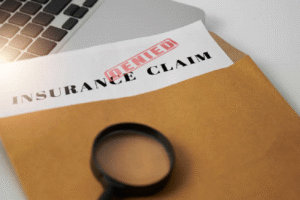Owning rental property is a smart investment—and a big responsibility. From unexpected damage to unfortunate tenant accidents, there’s always something that could go wrong. That’s where buy-to-let insurance (also known as landlord insurance) steps in. It’s not just a smart idea—it’s often required by your mortgage lender and essential for safeguarding your investment.
In this guide, we’ll walk through everything you need to know about buy-to-let insurance in the U.S.—from what it covers to how to choose the right policy. By the end, you’ll feel confident about protecting your rental property, tenants, and income.
🔍 What is Buy-to-Let Insurance?
Unlike standard homeowners insurance, buy-to-let insurance is specifically tailored for rental properties. It acknowledges that you’re not living in the property—you’re leasing it out for profit. As a result, standard homeowner policies often don’t cover the unique risks landlords face.
A typical buy-to-let policy includes:
-
Property damage—including fire, flood, storms, vandalism, and theft.
-
Liability coverage—for legal claims if someone is injured on your property.
-
Loss of rental income—if your tenants must move out after a covered event, this replaces lost rent.
-
Optional add-ons—like legal expenses, rent guarantee, or coverage for accidental tenant damage.

🏡 Why U.S. Landlords Really Need This Insurance
Here are the top reasons landlords shouldn’t skip buy-to-let insurance:
1. Property Protection
Accidents like fires, burst pipes, or vandalism can strike at any time—and repairs aren’t cheap. Your landlord policy steps in where standard homeowner insurance often falls short.
2. Liability Coverage
If a tenant or guest gets hurt on your property, you could be sued. Liability coverage helps pay legal fees, medical bills, or settlements. Without it, you could be personally responsible.
3. Rental Income Replacement
Let’s say tenants must move out or can’t pay rent following a covered incident like a fire. Loss of rent coverage helps you keep your mortgage payments up until repairs are finished and new tenants arrive.
4. Legal Requirement
Many lenders make landlord insurance mandatory. It protects their investment too. Without it, you risk going in breach of your mortgage contract—which could lead to penalties or even foreclosure.
5. Peace of Mind
There’s peace of mind in knowing your property is safeguarded. You can deal with unexpected setbacks without derailing your personal finances or investment strategy.
🛠️ What Does Buy-to-Let Insurance Actually Cover?
Coverage varies from policy to policy, but most buy-to-let insurance includes:
Property Damage:
-
Fire, smoke, and explosion
-
Storm, flood, or hail (even in areas with high flood risk)
-
Vandalism and theft—protecting you from lost or damaged property
-
Glass and signs—broken windows or outdoor signage replacement
Liability Protection:
-
Covers bodily injury or property damage to tenants or visitors.
-
Includes legal defense costs—even frivolous claims.
-
Can include protection against libel, slander, or false eviction claims.
Loss of Rental Income:
-
Replaces lost rent if tenants can’t live in the property due to damage.
-
Covers financial shortfalls while repairs are underway.
Optional Add-Ons:
-
Legal expenses cover—helps with eviction or recovery costs.
-
Rent guarantee insurance—protects you from tenants who stop paying rent.
-
Accidental damage—covers tenant-caused damage to windows, boilers, or walls.
-
Alternative accommodation—pays housing costs for tenants during repairs.

📝 How to Choose the Right Buy-to-Let Insurance
Selecting a policy that matches your needs and risk tolerance is key. Here’s how to narrow it down:
1. Check Coverage Limits & Exclusions
What counts as “sudden and accidental”? Some policies exclude wear-and-tear or certain natural disasters. Know what’s included and what’s not—like earthquakes or sewer backups.
2. Liability Protection Amount
If someone gets hurt in your property, legal fees and medical bills can skyrocket. Ensure your coverage reflects the rental’s size and type of tenants (families, roommates, short-term rentals, etc.).
3. Evaluate Add-On Needs
Think about your risks:
-
Planning to have roommates? Rent guarantee could save your income stream.
-
Evicting problem tenants? Legal expenses insurance is wise.
-
Want to limit disputes? Accidental damage cover helps.
4. Deductibles and Premiums
Higher deductibles typically mean lower monthly premiums—just make sure you can cover the deductible if you need to file a claim.
5. Special Considerations for Furnished Rentals
Landlord insurance often covers the structure only. For furnishings and appliances, you’ll need additional contents insurance.
6. Bundle Policies
If you own multiple properties, bundling them under one insurer may save money and simplify administration.
7. Compare Multiple Quotes
Policies can vary widely. Get quotes from several providers and compare coverage details—not just price.
8. Review Customer Service
Look for insurers with quick claims processing, 24/7 support, and good user reviews. A fast payout can prevent extended vacancies and headaches.
✅ Tips for Lowering Your Premiums
Being a smart landlord can help you get better insurance rates:
-
Install safety features: Adding smoke detectors, security cameras, deadbolt locks, or alarm systems can discount your premiums.
-
Improve plumbing and wiring: Newer systems lessen the risk of claims.
-
Raise deductibles: A higher deductible lowers monthly premiums.
-
Maintain the property: Regular upkeep stops small problems from turning into expensive ones.
-
Bundle your policies: Home, auto, and umbrella insurance under one provider can bring discounts.
🤔 Is Buy-to-Let Insurance Worth It?
If you own rental properties:
-
The risk of large repair bills, tenant injury claims, or rental loss is high.
-
Lenders often require it.
-
Without insurance, you’re personally accountable for every loss.
In short: For landlords in the U.S., buy-to-let insurance is less a luxury and more a must-have investment.

🔍 Common Landlord Insurance FAQs
Q: Can I skip landlord insurance if I have homeowners insurance?
A: No—homeowners insurance excludes rental use and won’t cover liability or income loss tied to tenants.
Q: Does landlord insurance protect tenants’ belongings?
A: Typically not. Encourage tenants to get renters’ insurance for personal item protection.
Q: Do I need multiple policies for multiple properties?
A: If you own several rentals, you can often bundle them into a multi-property policy—ask providers for options.
Q: How long is the claims process?
A: It varies. Fast claim resolution means tenants can return quickly and rent resumes. Choose an insurer known for quick service.
📌 Final Thoughts
Buy-to-let insurance isn’t optional—it’s essential for:
-
Keeping your property and income secure
-
Meeting lender requirements
-
Avoiding massive out-of-pocket losses
-
Managing risk and legal liability
When choosing, focus not on the cheapest option, but on the best value. Compare policies, check coverage limits, and don’t overlook key add-ons like legal expenses and rent guarantee. By investing a little time now, you’ll save money, headaches, and stress down the road.
Happy renting—and here’s to smooth sailing in your landlord journey!





